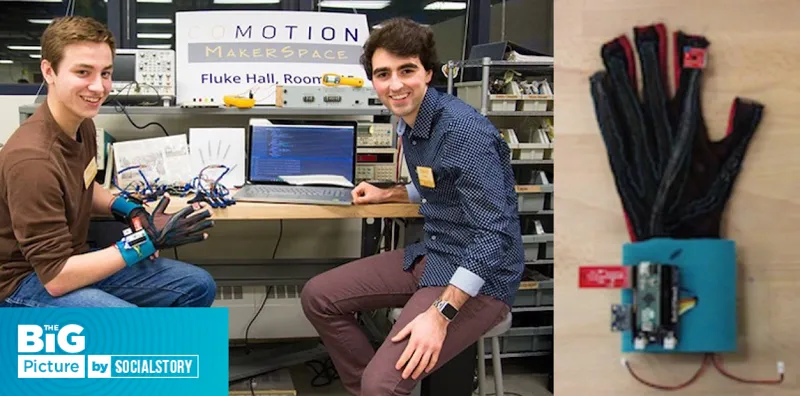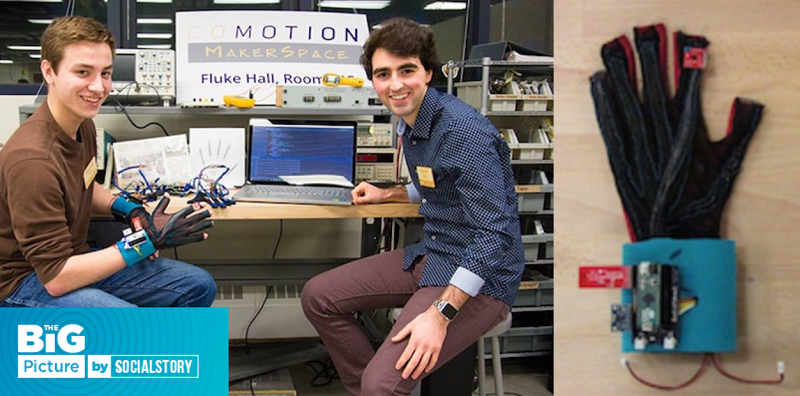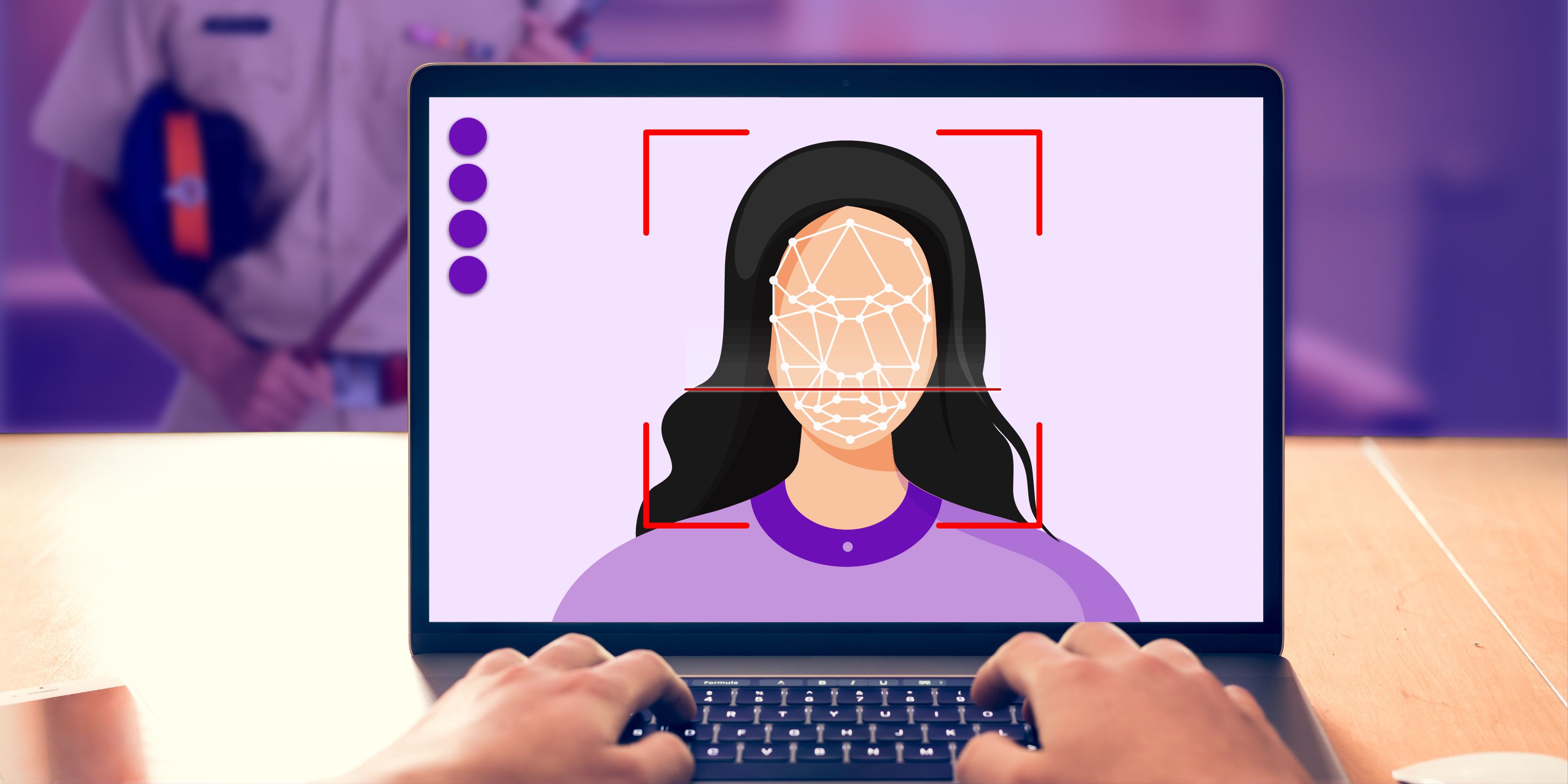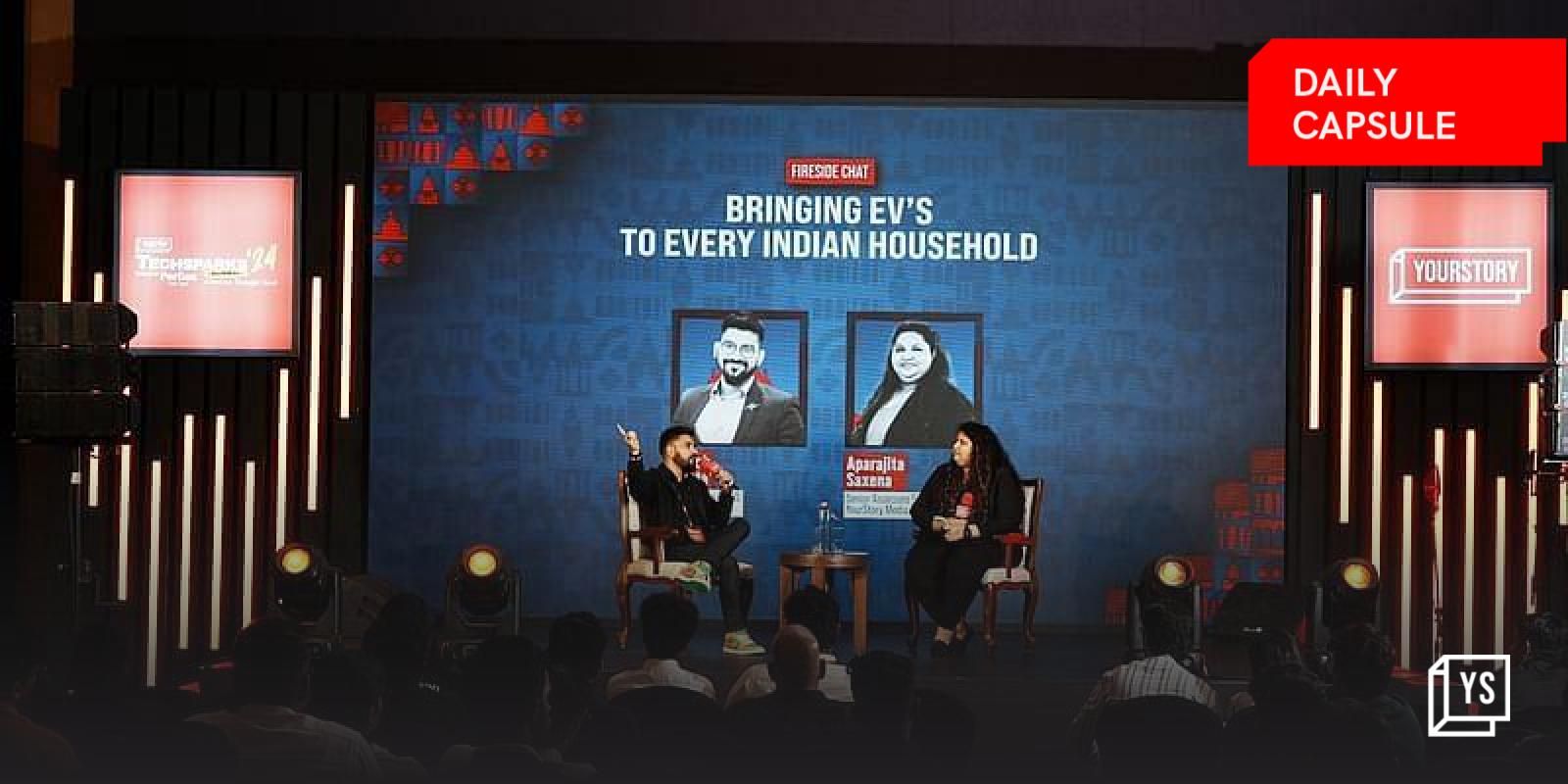How gloves that convert sign language to speech will empower the deaf community
Two second-year university students in the US have developed a pair of gloves that can translate sign language into speech and text, a tool they hope will empower the deaf community. Navid Azodi and Thomas Pryor, from the University of Washington, developed SignAloud, a pair of gloves that recognises hand gestures that correspond to words and phrases in American Sign Language (ASL).

Navid’s personal experience gave birth to the idea of SignAloud. “Until I was seven years old I didn’t speak, so for the first years of my life I used non-verbal communication. I was sharing that with Thomas, and alongside our interest in invention and problem solving … somehow this idea of the gloves came to be,” he told ABC News. The gloves record hand position and movement using sensors, then send that data wirelessly to a central computer that matches the movement with a gesture in the database. If the data matches a gesture, the associated word or phrase is spoken through a speaker.
One of the biggest challenges faced by Navid and Thomas during the development of the device was trying to translate sign language into verbal English. “The question is: how do you take a physical language that is so dynamic and beautiful, such as ASL, and turn it into a verbal language?” Navid said. “We found that the syntax and the nuances of such a beautiful language like ASL, that was very difficult [to translate]. “We don’t have the entire ASL vocabulary — there’s no way we could categorise all that. But we have a strong foundation to build upon that and really it’s going in that direction,” stated Navid. The project won the students a $US10,000 prize from Lemelson-MIT.

Navid said this money would enable the pair to refine the technology further, opening up the possibility of adapting SignAloud technology to understand other sign languages, such as AUSLAN. “There are so many types of sign language and obviously we focused on ASL … we’re not going to try make it a one-language-fits-all, because that’s not what this is. However, the general idea can pretty easily be applied to different [languages],” he said. “It’s going to take some time to build a database and really apply it to AUSLAN or other international sign languages, however it is possible. “And I think that just goes to show the potential for a device like this,” he added.
To stay updated with more positive news, please connect with us on Facebook and Twitter.











